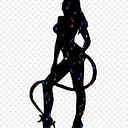Cold sores (fever blisters) are a common viral infection. Tiny fluid-filled blisters around the lips. These blisters are often grouped into several parts. Once the blisters burst, a scab forms that can last several days. Cold sores usually heal within 2 to 3 weeks without leaving a scar.
Cold sores spread from person to person through close contact, like kissing. This disease is usually caused by herpes simplex virus type 1 (HSV-1), and less frequently caused by herpes simplex virus type 2 (HSV-2). Both of these viruses can attack the mouth or genitals and can be spread through oral sex. This virus can spread even if you don’t see the wound.
There is no cure for cold sores, but treatment can help manage outbreaks. Prescription antiviral medications or creams may help the wound heal more quickly. And this might make future outbreaks less frequent, shorter, and less serious.
Symptoms of a Cold Sore
A common cold sore usually goes through several stages:
1. Tingling and itching
Many people feel itching, burning, or tingling around the lips for about a day before small, hard, painful spots and blisters develop.
2. Blisters
Small, fluid-filled blisters often form along the edges of the lips. Sometimes it appears around the nose, cheeks, or inside the mouth.
3. Oozing and crusting
Small blisters may stick together and then burst. This can leave shallow open wounds that ooze and crust over.
Symptoms vary, depending on whether this is the first outbreak or a recurrence. The first time you have a cold sore, symptoms may not appear until 20 days after you were first exposed to the virus. The wound can last several days. And blisters take 2 to 3 weeks to heal completely. If blisters reappear, they will often appear in the same place each time and tend to be less severe than the first blister.
In your first outbreak, you may also experience:
- Sore throat
- Fever
- Headache.
- Painful gums.
- Muscle ache.
- Swollen lymph nodes.
Children under 5 years of age may develop cold sores inside their mouths. These sores are often mistaken for canker sores. Canker sores only involve the mucous membranes and are not caused by the herpes simplex virus.
Causes of Cold Sores
Cold sores are caused by a virus called herpes simplex.
There are 2 types of herpes simplex virus. Cold sores are commonly caused by the herpes simplex virus type 1 (HSV-1). Herpes simplex virus type 2 (HSV-2) causes most cases of genital herpes. However, both viruses can cause cold sores and/or genital herpes.
HSV-1 is common in the general community, and about 8 in 10 people become infected with HSV-1 as they reach adulthood. Most people are infected when they are young, carry the infection for life. The virus can remain dormant (inactive) in many people, meaning that cold sores may never appear. You probably have the virus without knowing you’re infected.
Various factors can cause the virus to become activated resulting in one or more cold sores.
They may include: emotional upset or stress, fatigue, damage to the skin from strong sunlight, cold or wind, periods (menstruation), ilness.
Can Cold Sores Be Prevented?
If you have never had a cold sore, avoid skin-to-skin contact with someone who has an active cold sore. If you’ve ever had a cold sore, you can prevent or reduce the number of flare-ups by determining what triggers the flare-up and avoiding triggers. For example, if exposure to sunlight is the trigger, use sunscreen when in the sun. If you frequently experience outbreaks, consult your doctor. Starting treatment as soon as you find out you have a cold sore can speed healing and shorten the healing time for cold sores.
Cold sore outbreaks are often triggered by exposure to hot sun, cold wind, a cold or other illness, a weak immune system, or even stress.
